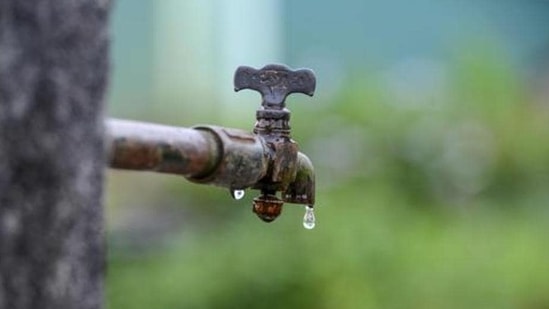Exploring ways to fill Delhi’s unmet water needs
This article is authored by Rumi Aijaz, ORF.
Delhi—a city and Union Territory (UT) containing the country’s Capital, New Delhi—continues to grow in population, posing challenges to civic agencies in the provision of citizens’ essential needs. This brief examines the experience of Delhi’s water agency in obtaining raw water, amid the growing gap in supply and demand that is only being exacerbated by climate change. The brief finds multiple reasons for the inadequacy of raw water, including infrastructure deficiencies, inter-state disputes in water sharing, and groundwater pollution. It highlights the need to augment the raw water base and improve its management in order to build Delhi’s water resilience.

The population of the UT of Delhi, pegged at 20 million in 2021, is growing at a rate of 2.12% per annum, making it ever more difficult for the responsible civic agencies to provide essential services to its inhabitants. Indeed, Delhi’s population is not only large in numbers but also highly diverse, compounding the difficulties. For example, an estimated four to five million people—or 25-30% of the city’s population—live in unauthorised colonies and slums. Due to the unplanned nature of constructions and unauthorised residential status of the population, these communities are not being provided adequate basic services.
This brief examines the experience of the Delhi Jal (water) Board, the agency primarily tasked with the supply of water in the city—in obtaining raw water for meeting citizens’ needs. The focus on water is warranted due to several reasons: significant proportions of the population living in the city’s informal areas do not have access to piped water supply; in the planned areas, those who have piped supply receive water only for a few hours a day; and there are concerns about low water pressure and the inferior quality of water supplied through pipelines and water tankers. Worsening the situation is climate change and its manifold consequences on water resources. It is noted, for one, that rising temperatures and unpredictable rainfall patterns are intensifying both water scarcity and water-related hazards. Data for the year 2023 shows a gap of 344 million gallons a day (mgd) between Delhi’s demand (1,290 mgd) and supply (946 mgd).
This brief attempts to build an understanding of how and from where the Delhi Jal Board collects raw water—which is then treated to make it safe for drinking—and the problems experienced in this task. Existing literature on this subject is scattered and offers a limited description of the issues involved. For example, there is hardly any official document in the public domain that accurately maps the course of raw surface water received in Delhi from various external sources. Similarly, there is a lack of information on the nature of inter-state water sharing disputes. These gaps in knowledge can impede the formulation of suitable strategies for raw water augmentation.
The paper can be accessed by clicking here.
This article is authored by Rumi Aijaz, ORF.





